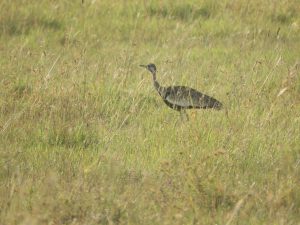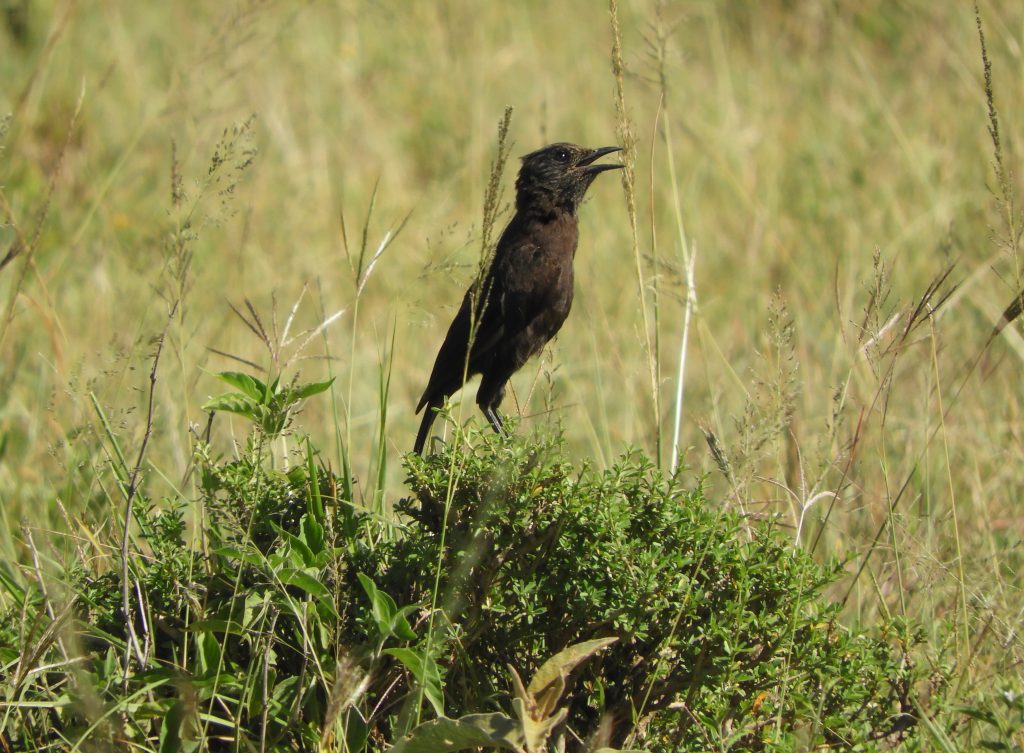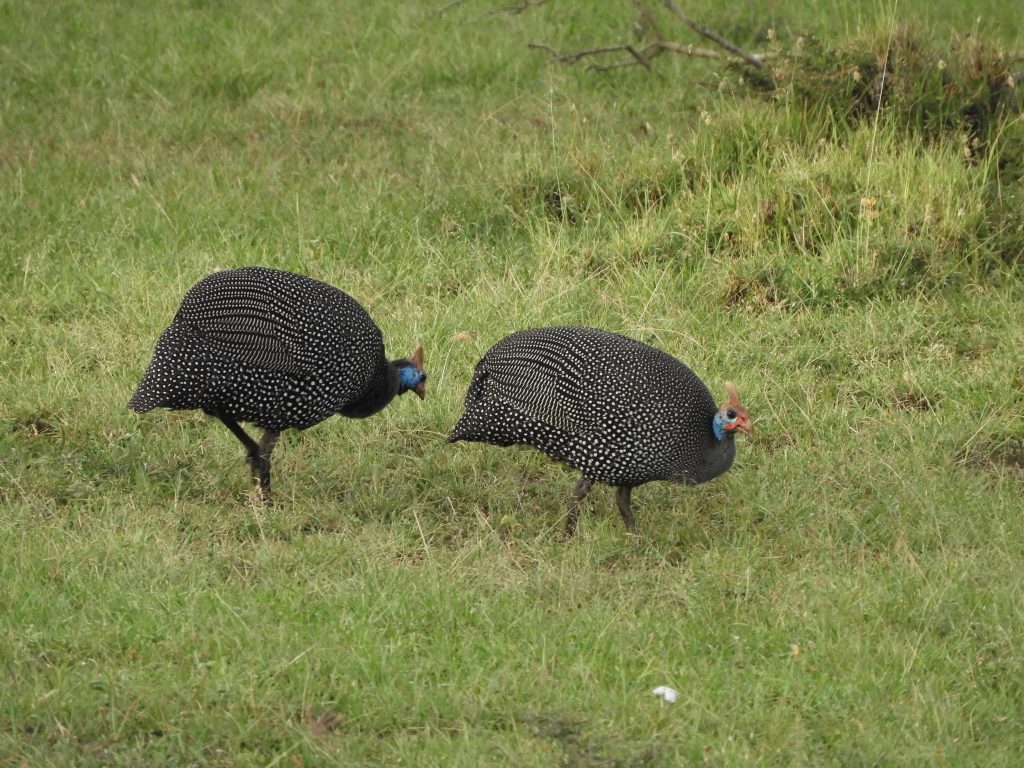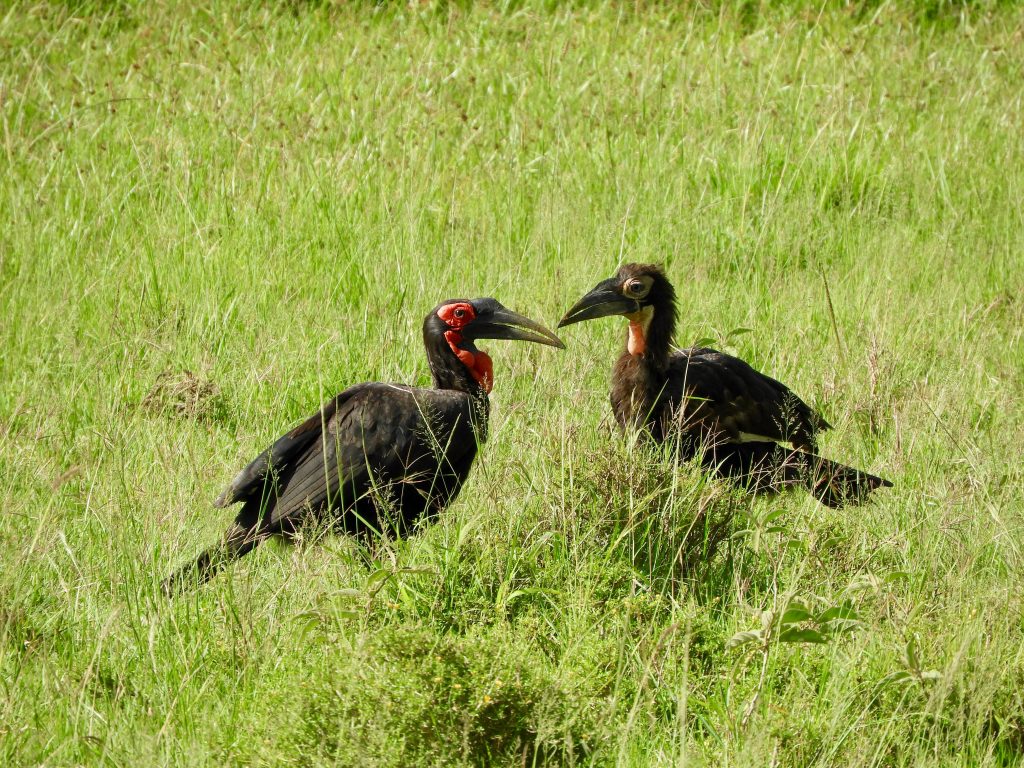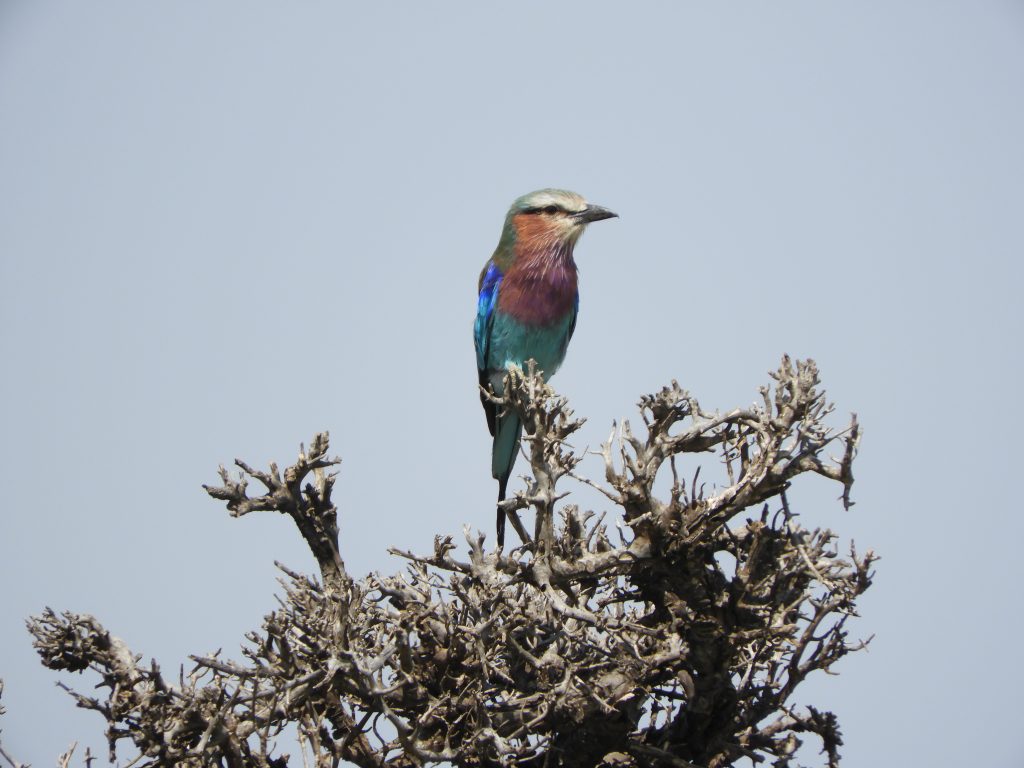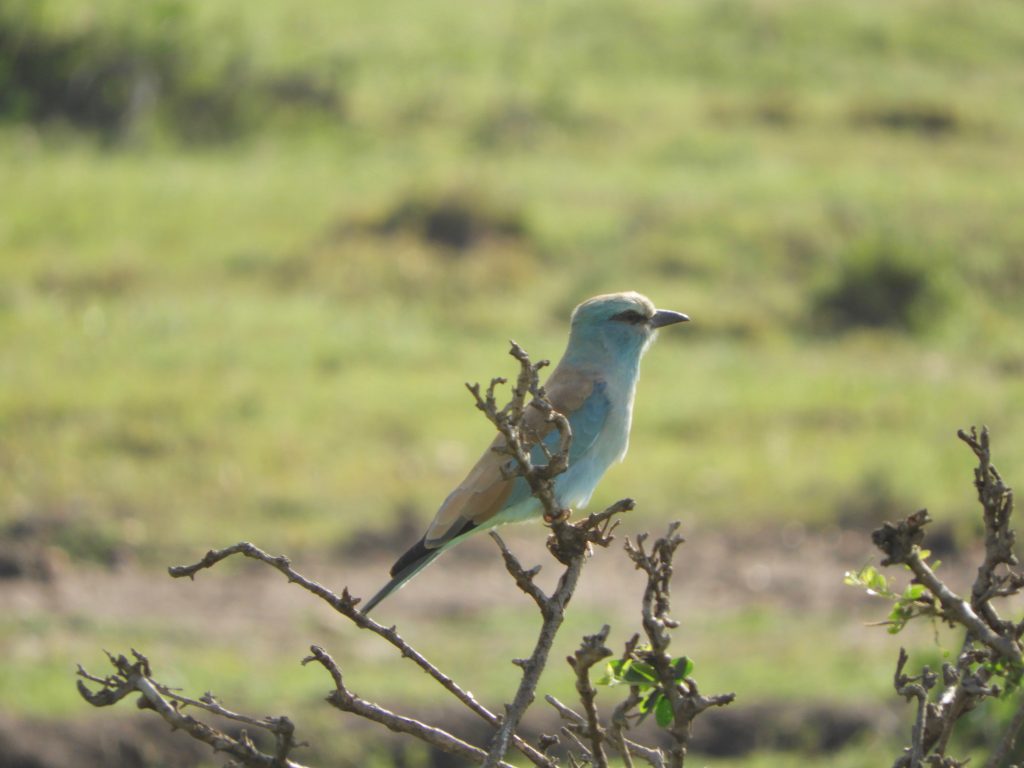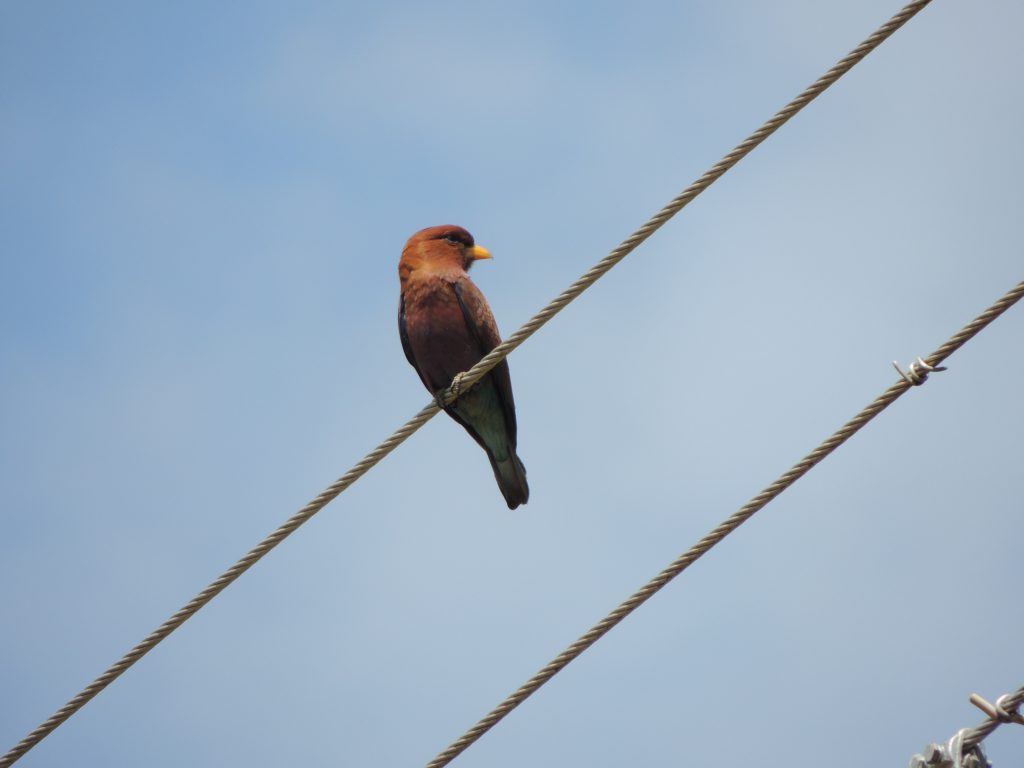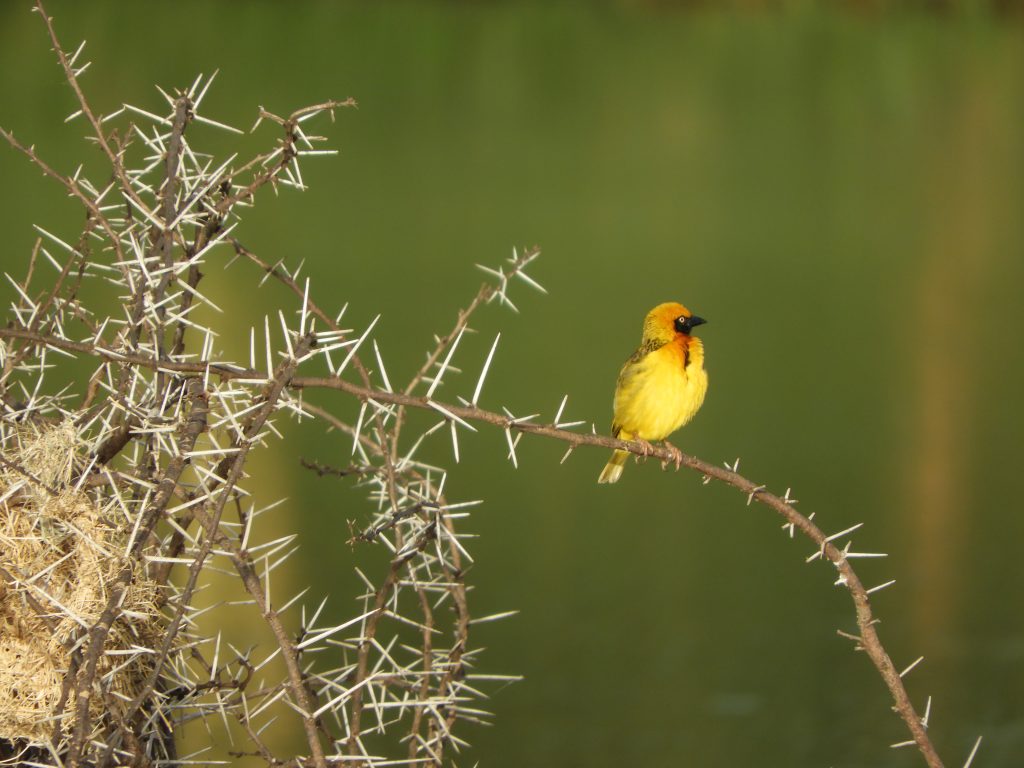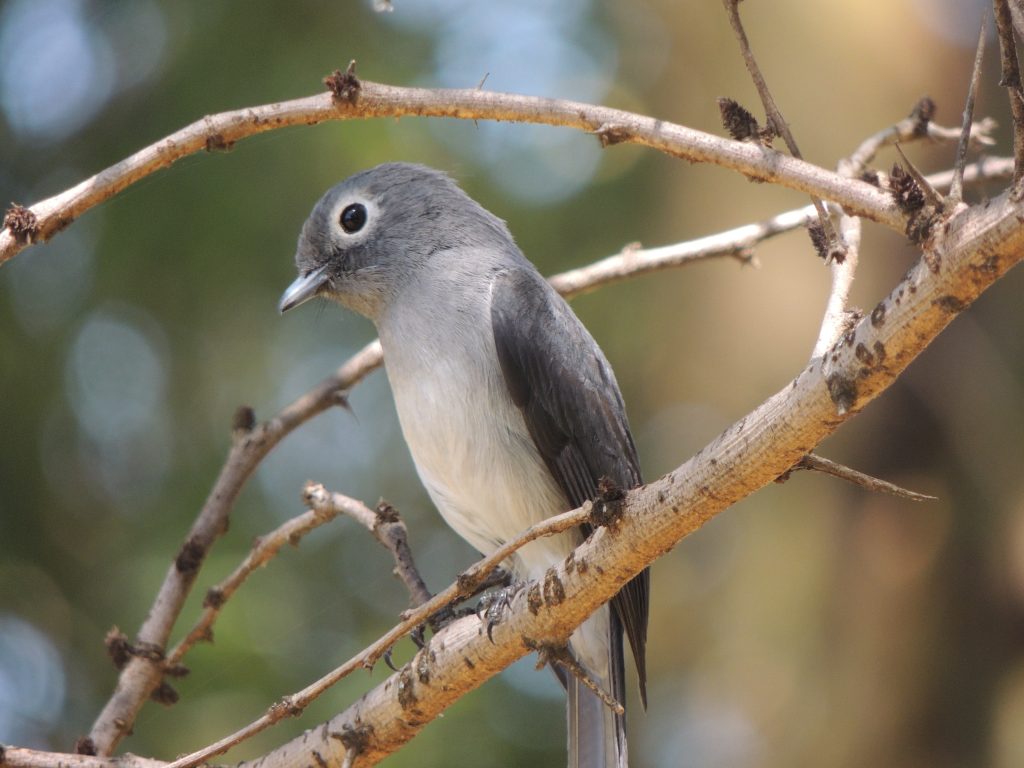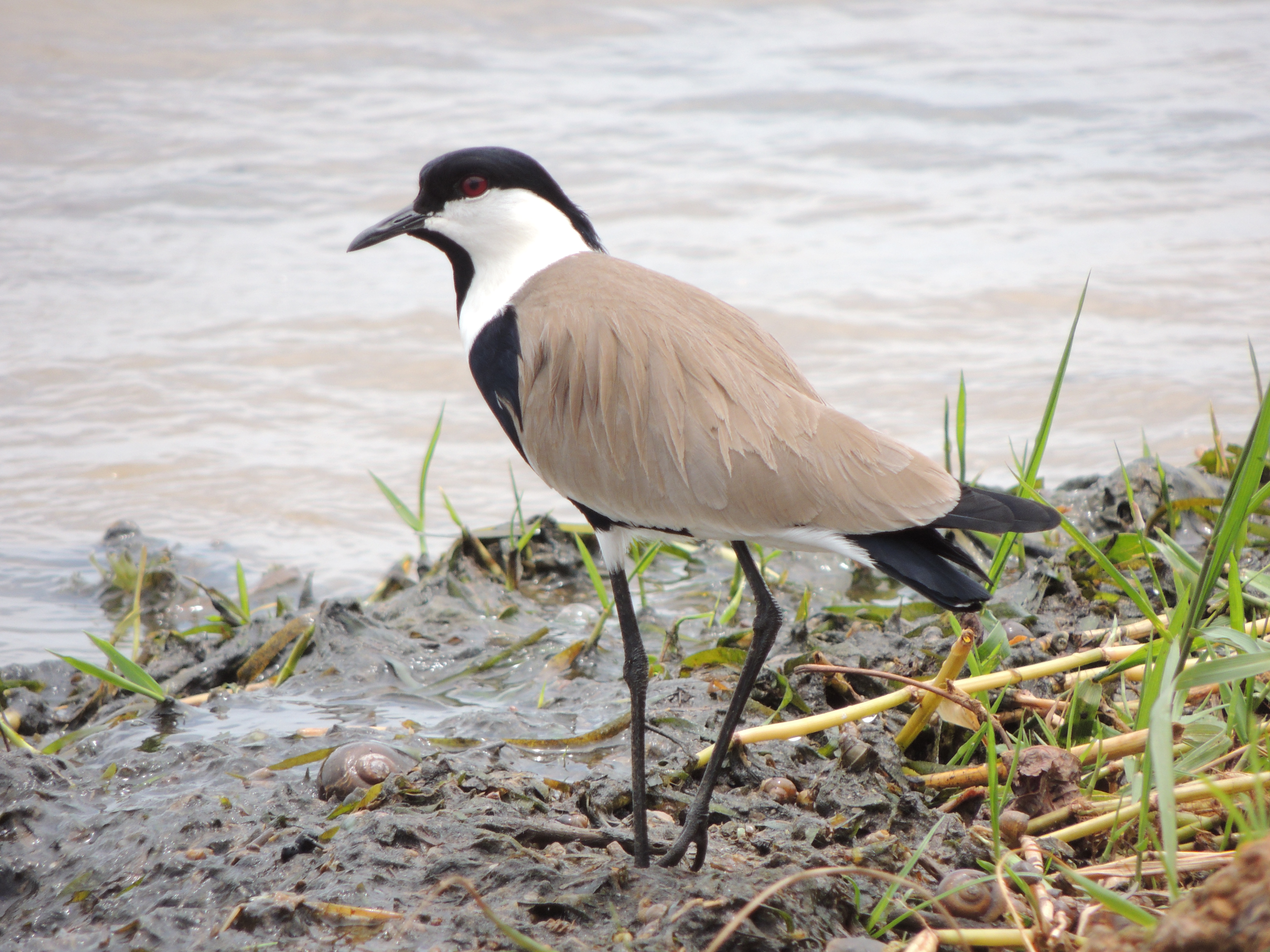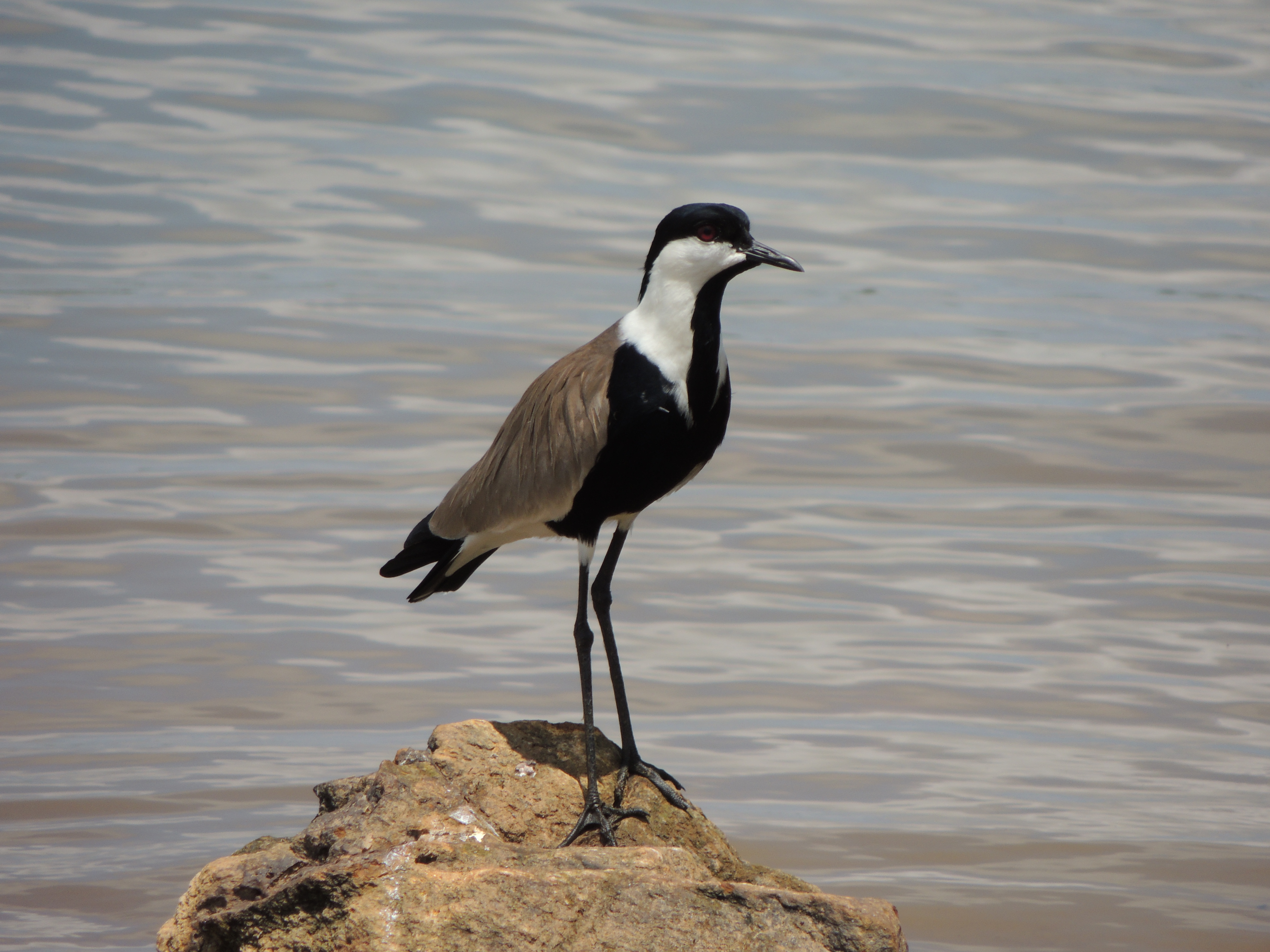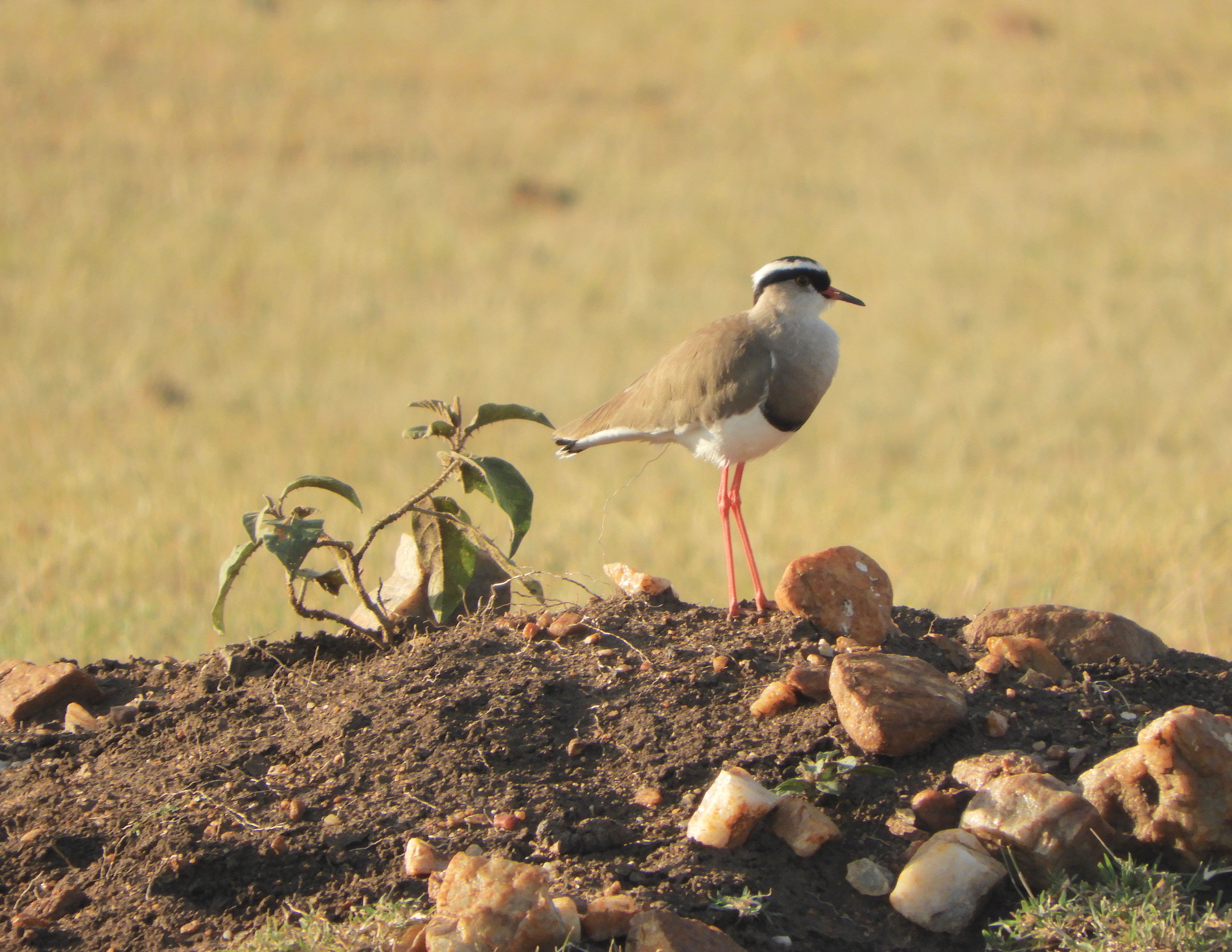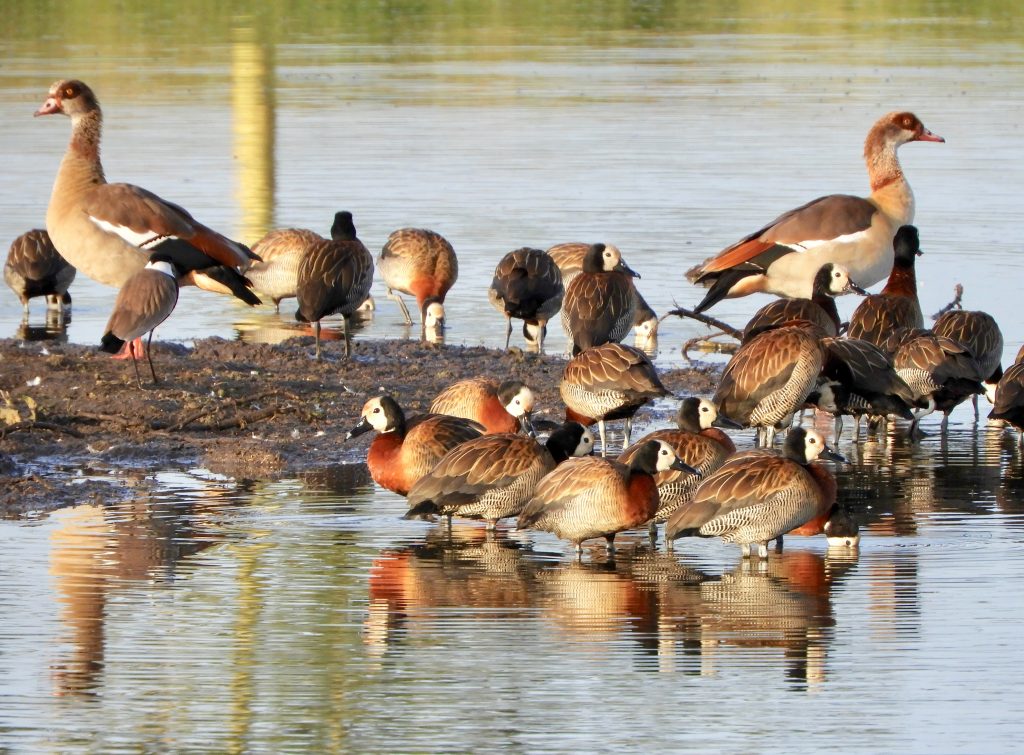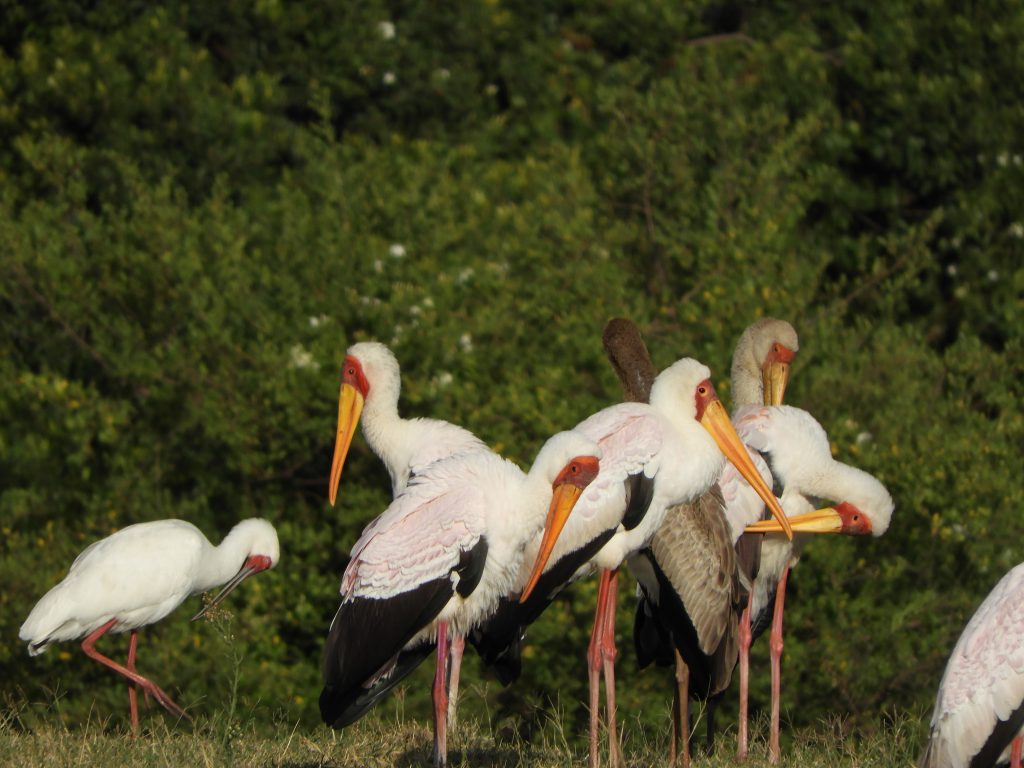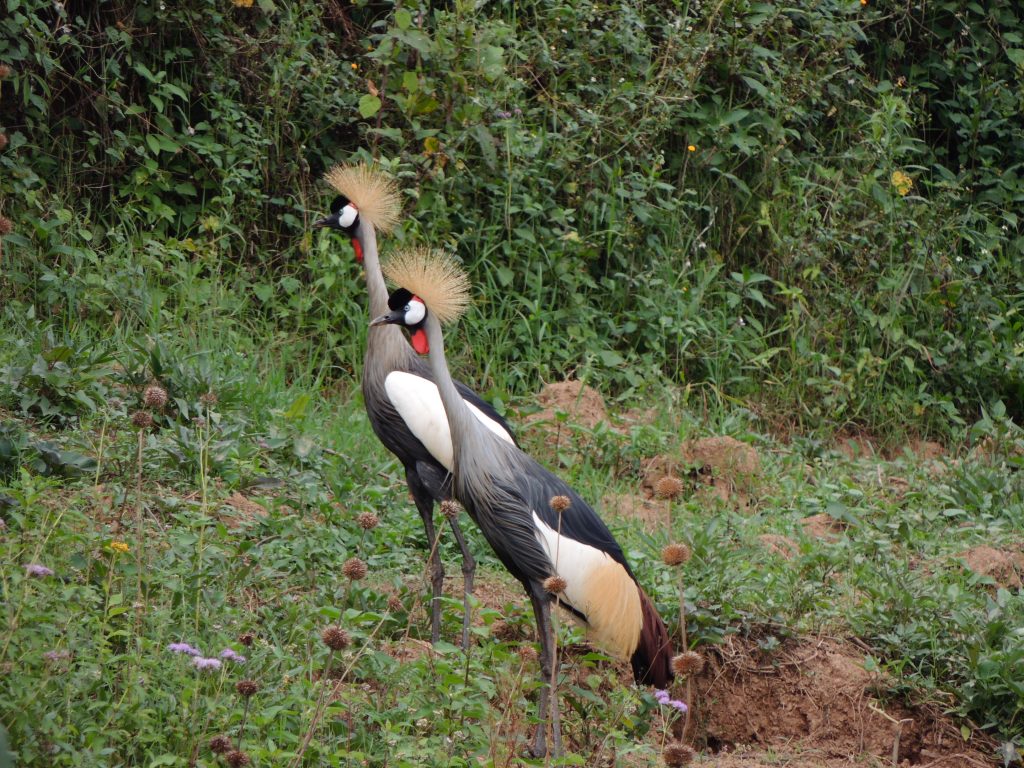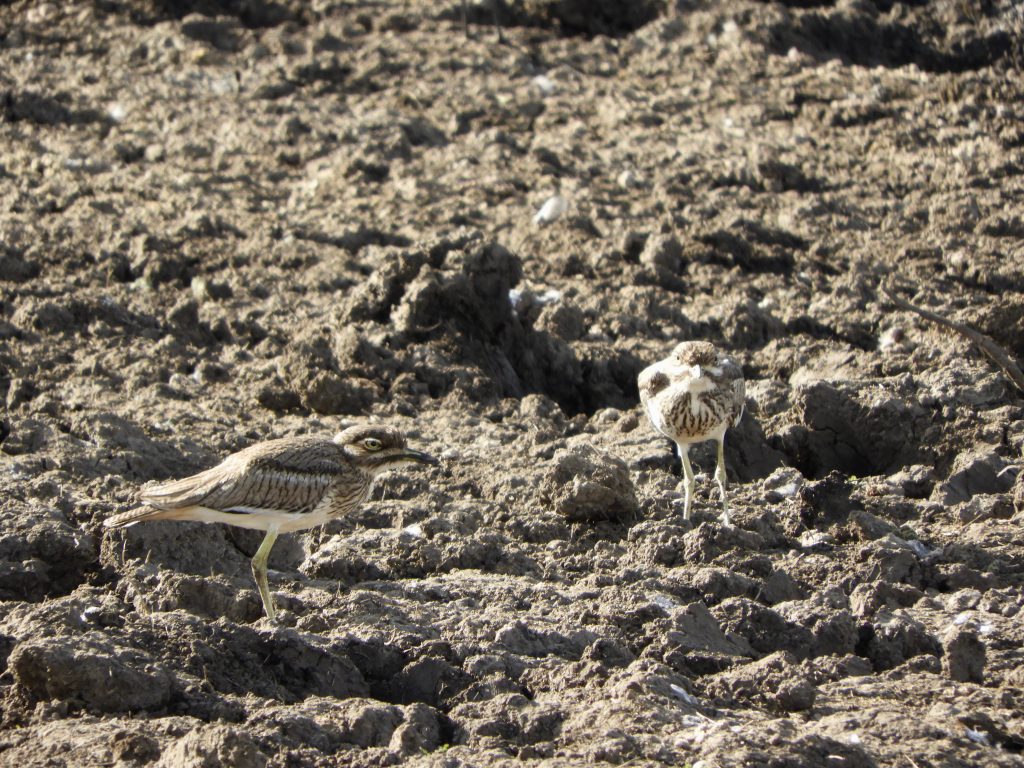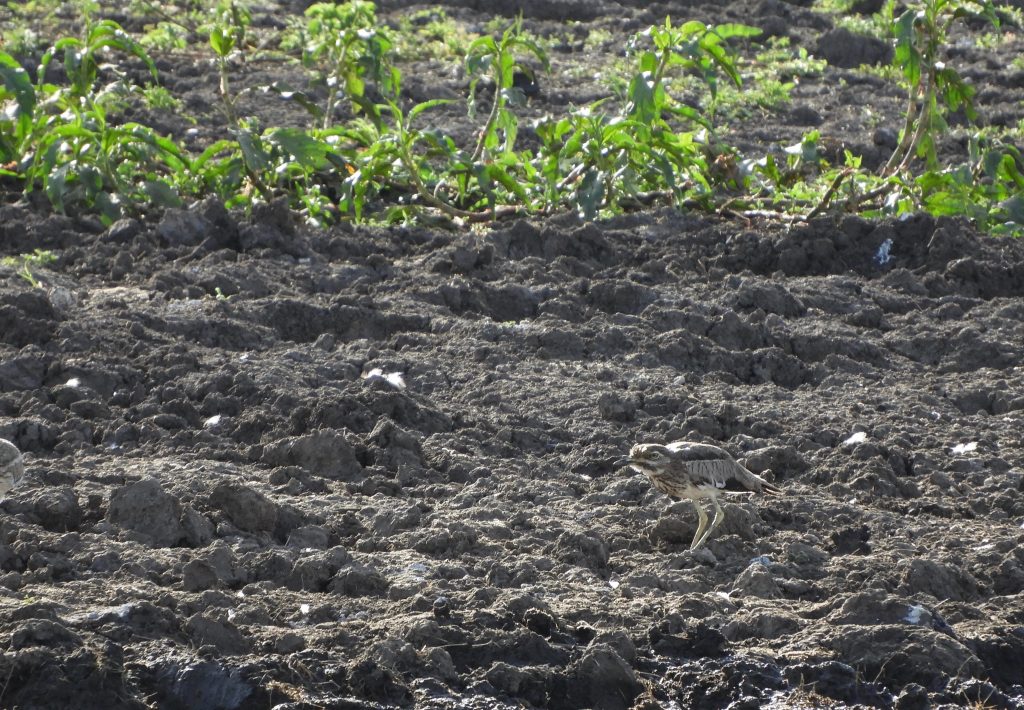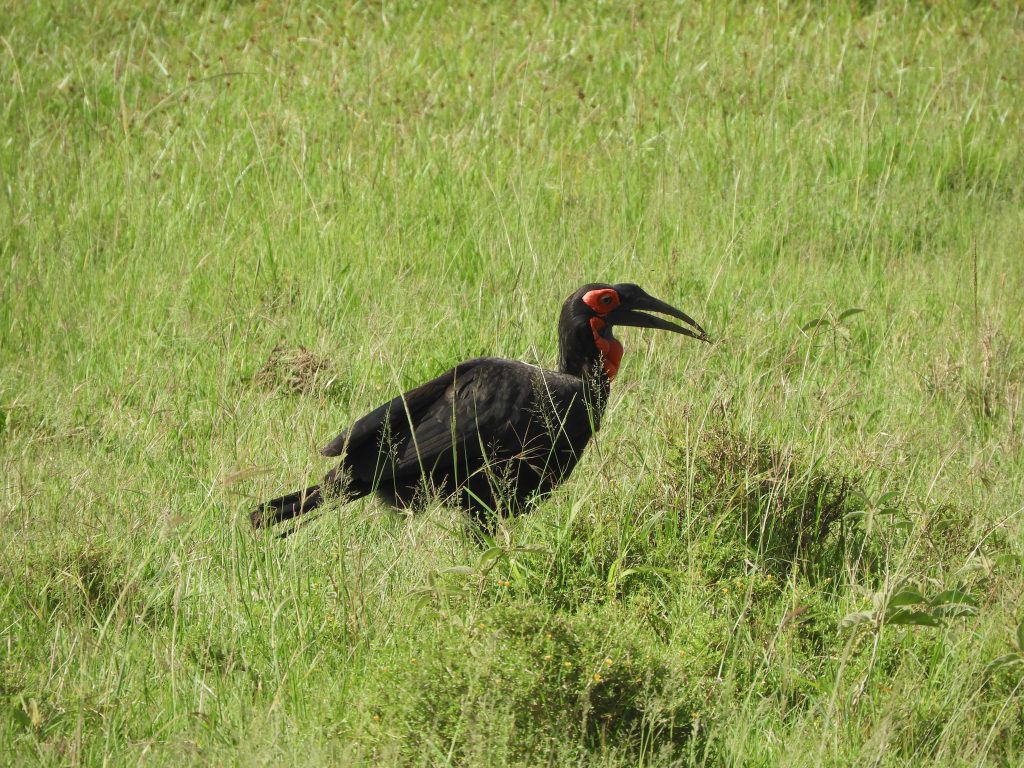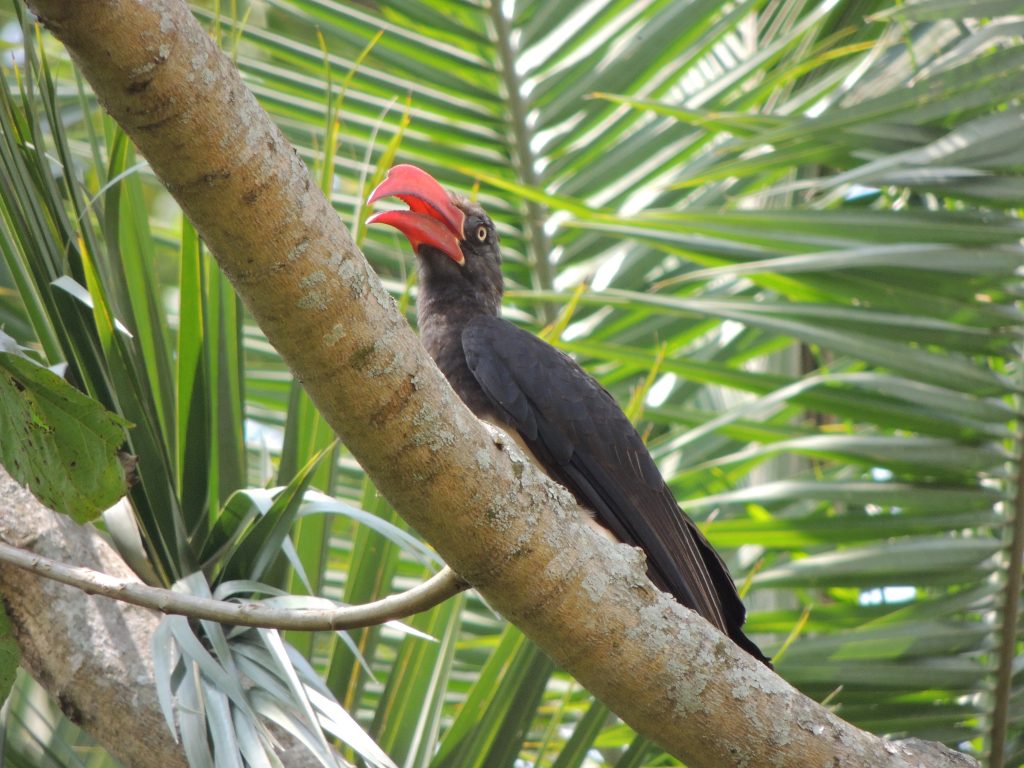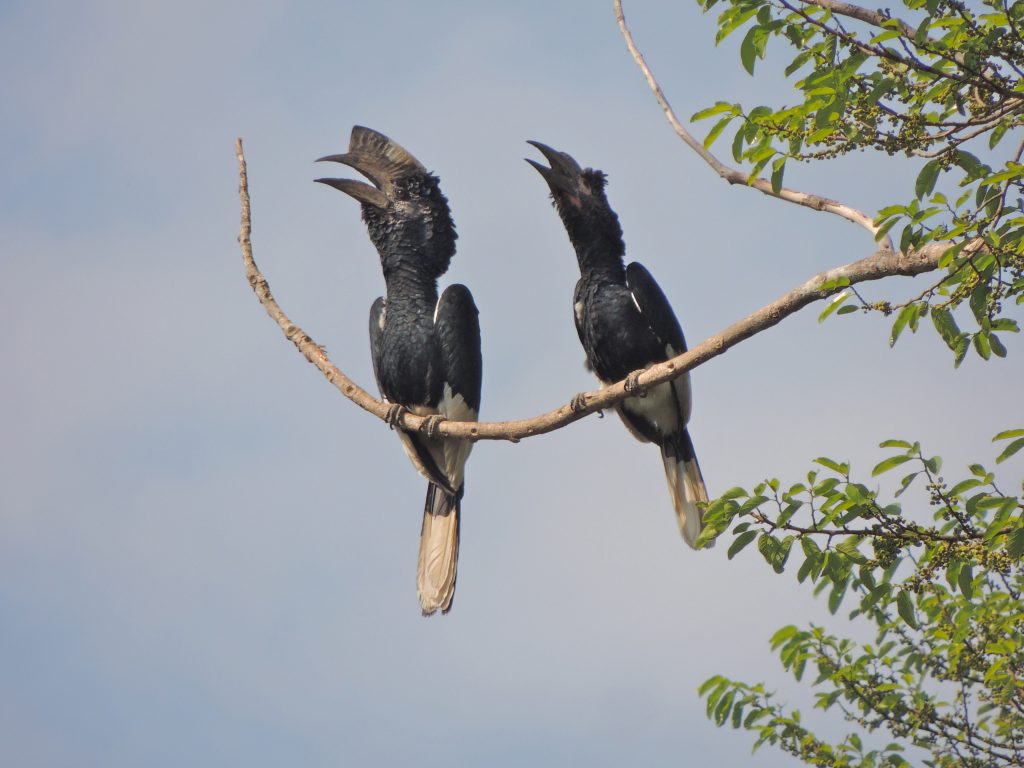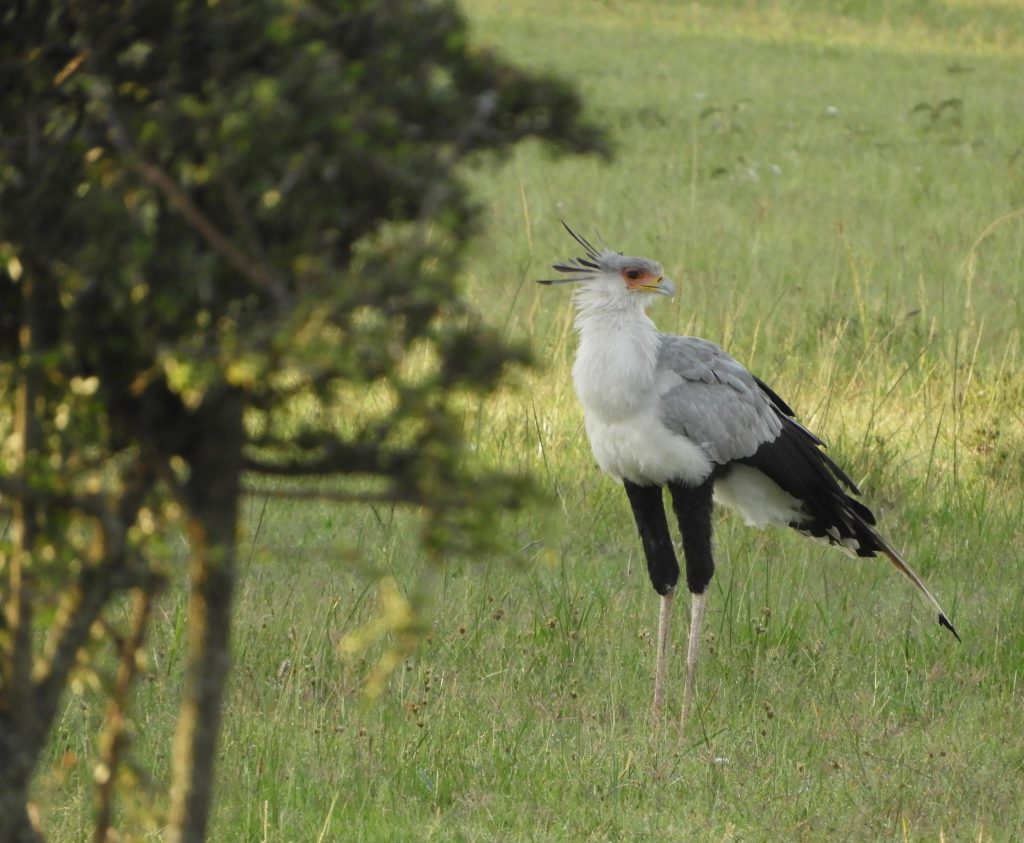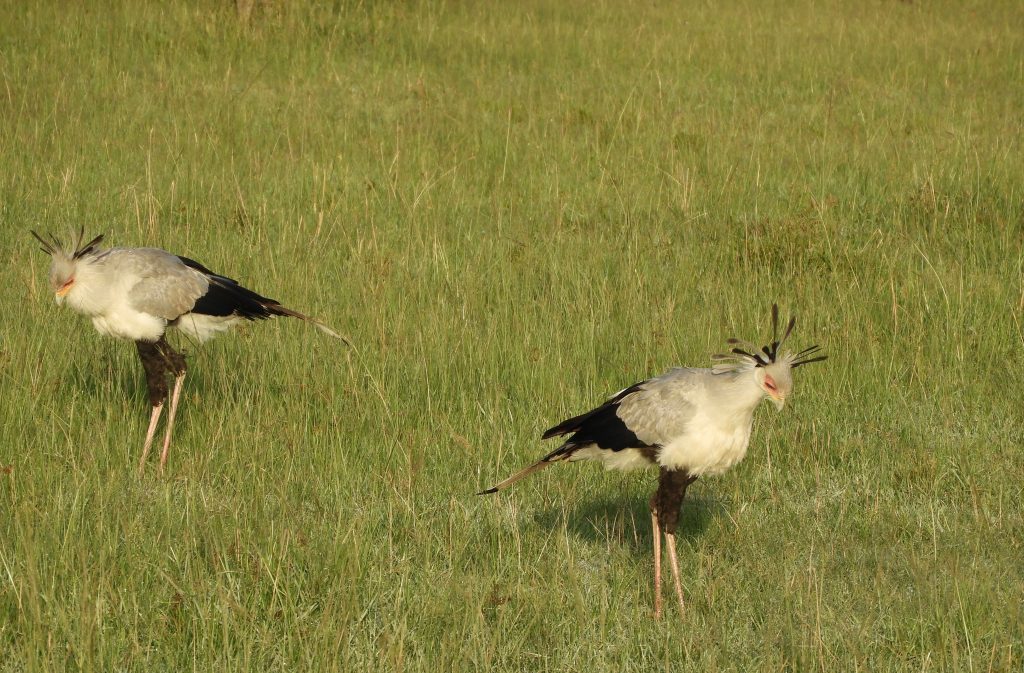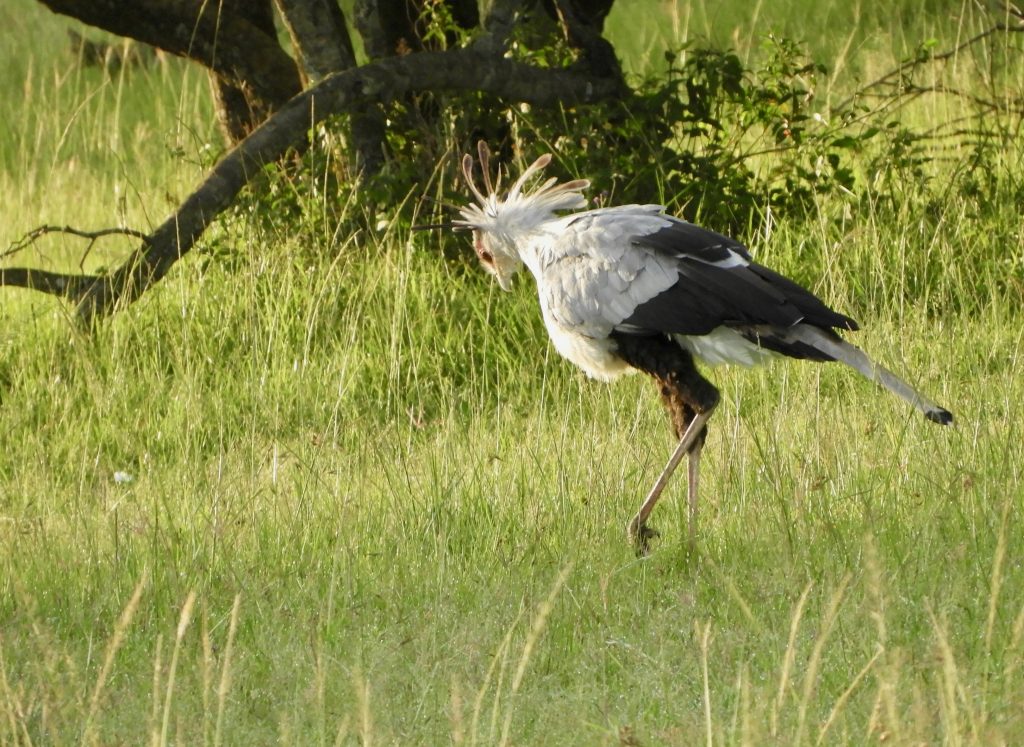Maasai Mara, Kenya. February 2019. I don’t often stray from this site’s path of focussing on one or maybe a couple of birds of a day. But February in the Maasai Mara, Kenya produced many interesting bird sightings, worth straying from the path for. You’ve probably seen those videos of stampeding herds of migrating Wildebeests, bounding and plunging, almost mindlessly, across a dangerous brown river where Nile Crocodiles cruise looking for easy pickings. Well, that’s not far from where I was for most of February 2019, on the Maasai Mara, the Kenyan half of what we generally understand as the Serengeti Plain.
The Maasai Mara is a familiar image, an unending expanse of African grasslands punctuated by acacia trees and home to countless wild animals including Lions, Elephants and Rhinos. The Maasai Mara has changed from its pristine state because of the pressures of human population growth: pressure from agriculture, urbanization and tourism. Much of the land is highly fertile and suitable for growing wheat, vegetables and even flowers for overnight shipment to Europe; towns and cities have emerged and with them roads and rail lines. Today’s Maasai Mara is perhaps also the safari capital of the world where a snoozing lion can draw an encircling audience of open-sided Landrovers.
I was not there on safari, I was there as part of a volunteer team organized by Biosphere Expeditions and engaged in a study of mammal populations. We did our work in a discrete corner of the Maasi Mara, in the Enonkishu Conservancy to be exact.
Enonkishu lies at the northern limit of the open Maasai Mara, at the interface between the wild lands and fenced farms. Our expedition scientist is studying how traditional cattle herding activities can be managed in harmony with the needs of Giraffes, Elephants, Impalas, Wildebeests, Zebras and many more. Our job was to gather data for a baseline study of native animal populations. (Watch this video made by one of our team members.)
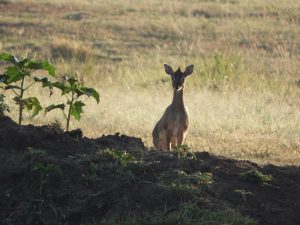
We conducted frequent counts of fauna, everything from half-metre Dik-diks to towering Giraffes. We systematically followed defined transect routes, sometimes on foot but usually in 4X4 Toyotas, counting all mammals, noting age and sex where possible. We also conducted a 72-hour around-the-clock watch over a waterhole. Ours was not a birding expedition but I was nevertheless always on the lookout and a few of us collectively tallied well over one hundred bird species. So, this is not by any means the definitive Birds of the Maasai Mara, it’s just a look at some of the interesting birds and mammals we saw as we went about our data-gathering work.
Ground level birds. The Maasai Mara is predominantly grassland so I’ll start at ground level by noting some of its larger birds. I saw a pair of Ostriches, just once and quite a long way off so they scarcely count. But a single Black-bellied Bustard counts, as do a pair of Secretary Birds (more on them later). The Bustard was little more than a drive-by, evidently our driver was not a birder, “Oh there’s a Black-bellied Bustard!” and then it was gone. In a quiet expanse of grassland, a nomadic group of Abdim’s Storks appeared one afternoon but didn’t stay for more than a few hours.
These dryish grasslands areas are a winter refuge homes for Pied Wheatears and Northern Wheatears. It’s worth noting that many Northern Wheatears wintering in east Africa are ultra-long-distance migrants who have flown 15,000 Km. (!) across Asia from their Alaska breeding grounds – and will soon turn around and head back, another 15,000 Km. We saw good breeding evidence of Grassland Pipits and Rufous-naped Larks here. I felt secure in identifying them but frankly there may have been other pipit and lark species around too. Identifying them can be quite a challenge even when you have time, comfort and a field guide at hand.
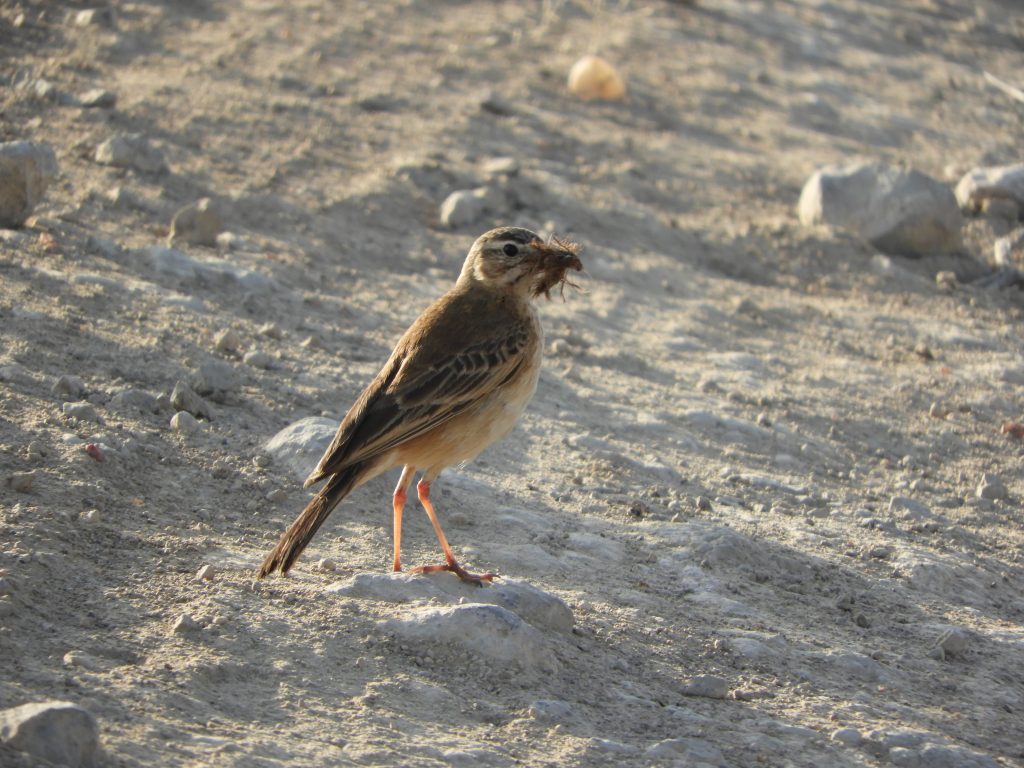
One night we flushed a nightjar from a grassy trail, probably a Square-tailed Nightjar, but this is a family that rarely shows itself and nighttime glimpses don’t tell you a lot. Northern Anteater Chats took a while to identify, they are unremarkable ground-level birds, all sooty black – until they fly away when you see large pale panels on their wings. But they rarely fly far and I sometimes found myself trying to recall exactly how much or how little I had really seen. But for a bird of little visual appeal they have a very melodious, if repetitive, song. I wished I’d had the luxury of time to study them more closely.
There were other more conspicuous birds of the ground: Helmeted Guinea Fowl, in flocks of a dozen or two who scatter as you approach, always running. I wondered how such a large and apparently vulnerable bird manages to survive, why they weren’t picked off by Black-backed Jackals. Perhaps the reality is they do fall prey to predators and just breed prolifically to keep numbers up. Southern Ground-hornbills too, another large and you’d think sitting duck for jackals and the like. Yet they wandered around, feeding, in open grassy areas apparently secure.
Birds of the Water. In my post celebrating Water Thick-knees I mentioned admiring (among other things) White-faced Whistling Ducks, Egyptian Geese and Red–billed Teal as well as wading birds including Yellow–billed Storks, Sacred Ibis, Red-knobbed Coot and African Spoonbill. But a brief post has its limitations and on that day we also watched African Jacana and Common Moorhen picking food on a carpet of Water Cabbage (Pistia stratiotes) that was choking a nearby Hippo pond.
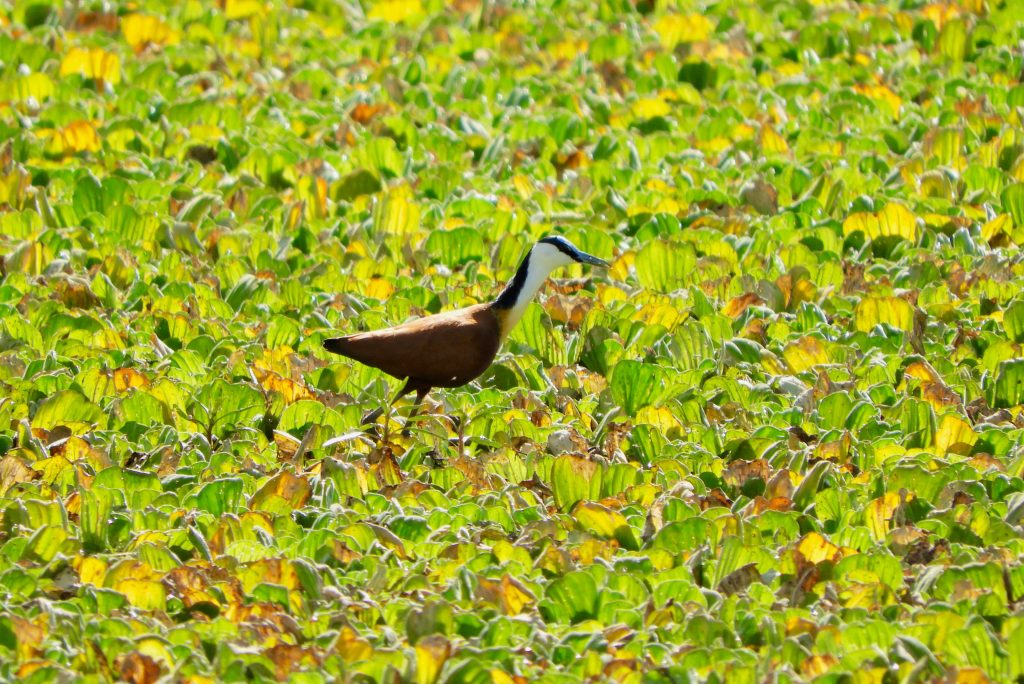
Our team of volunteers undertook a 72-hour watch over a waterhole and on one daytime shift, apart from the resident Hippos and visiting Giraffes and Zebras, I also noted Egyptian Goose, Spur-winged Goose, Black Stork, African Wattled Lapwing, Green Sandpiper, Three-banded Plover, Great Egret, Little Egret, Cattle Egret and a solitary Little Grebe.
I think I have to include Pied Kingfisher and Malachite Kingfisher in this Birds of the Water category too, and one of our team reported seeing a Giant Kingfisher one morning. Hadada Ibis and occasionally a Hamerkop sometimes kept company with a Nile Crocodile along the silty banks of the Mara River.
Birds of the Air. East Africa is eagle country and we saw Tawny Eagles quite often, a pair of Verraux’s Eagles riding the warm air along a hillside and one male Bateleur. I also photographed this Mystery Eagle, ( below) which is yet to be satisfactorily identified. Experts who we consulted informally said it is a young African Fish Eagle but I am not yet persuaded. (My mystery bird has a crest, Fish eagles don’t, – or do they?) Other than what you see in this photo, I will add that it certainly is large enough to be a fish eagle and when it flew away it showed a light back and its light tail has a dark terminal band, it was otherwise all dark (head, scapulars and wings.) I welcome any thoughts on this. (Leave a comment.)
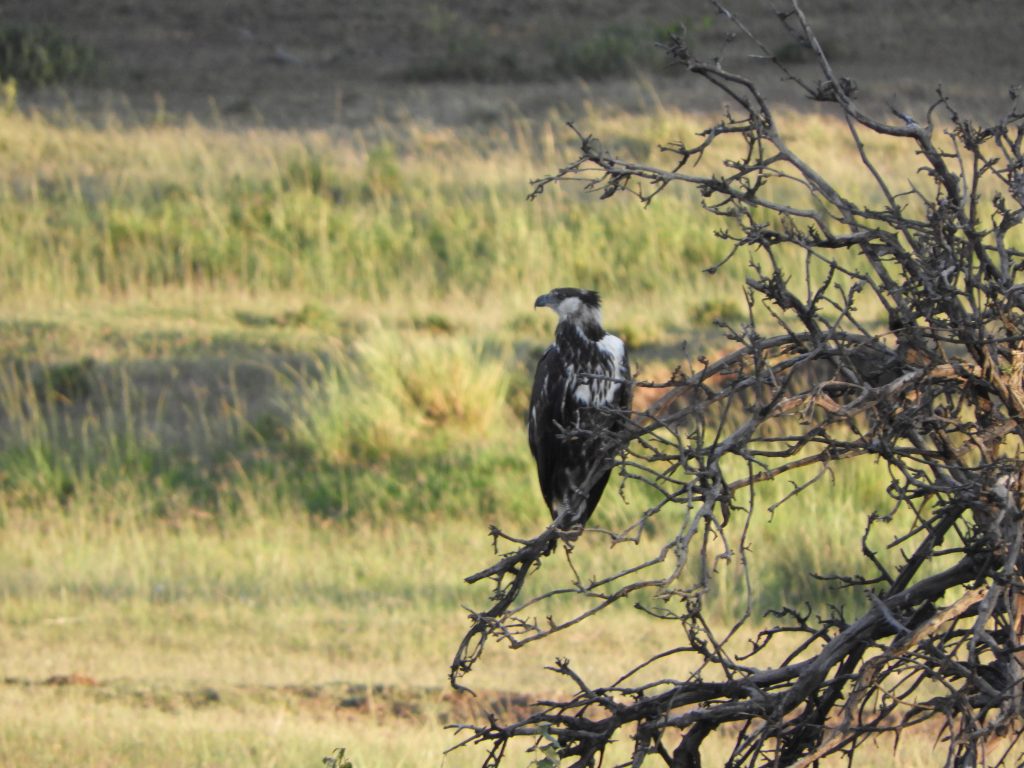
One day we noticed a small flock, a dozen maybe, of Common Kestrels gathering in a swirling kettle above us. To me, flocking behavior suggests that they were migrants on their way towards Eurasia for the summer ahead. With about 3,000 kilometers between us and the Mediterranean, they should easily be able to reach Eurasia by the spring equinox. Other aerial raptors seen included Augur Buzzard, Grey Falcon and Lanner Falcon.
There were many swallows and swifts around our base camp but we only identified Black Saw-wing, Common House Martin, Rock Martin, Barn Swallow and Wire-tailed Swallows (the latter were nesting on site). We rarely had time, inclination and patience to work at methodical identification of these fast-moving birds.
Showy Birds. I include here birds that will stop me in my tracks. One early morning we watched a pair of Secretary Birds for several minutes, I mentioned them earlier. We had just recorded a small group of Impalas and Bush Bucks and were on the lookout for a known colony of Bat-eared Foxes when we spotted the Secretary Birds carefully searching for food on a wide grassy opening. They were so absorbed in their hunt they scarcely noticed us. I posted about them as my Bird of the Day, you can read much more here. Grey Crowned Cranes are one of East Africa’s most breathtakingly spectacular birds, it’s almost a wonder they haven’t been hunted to extinction. They prefer slightly wetter habitats but can sometimes be seen in drier open fields too, we often saw a pair of them in a moist pasture alongside grazing Giraffes, Zebras and Wildebeests.
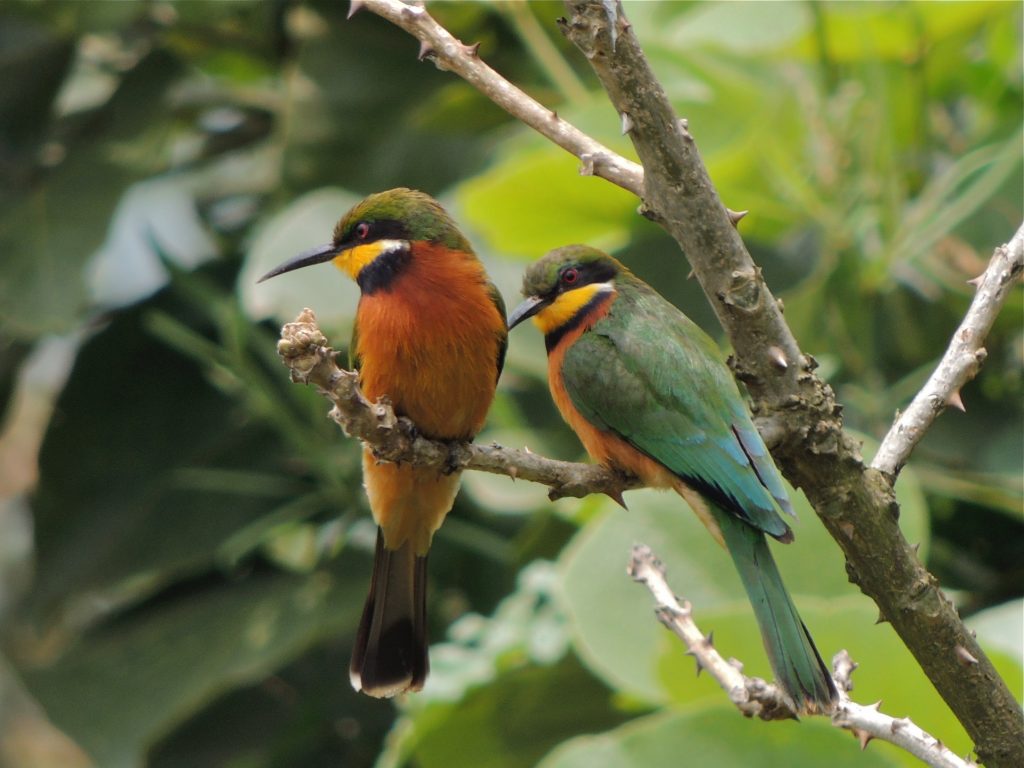
Bee-eaters with their acrobatic, insect-snatching flight belong in this showy-birds group and there were small groups of White-fronted Bee-eaters and Cinnamon-chested Bee-eaters to be found here and there although they seemed to be locally nomadic. It’s hard to ignore any of the roller species, we occasionally saw the always breathtaking Lilac-breasted Rollers and several European Rollers and just one Broad-billed Roller.
I’d met members of the Turaco family on earlier trips to Uganda (specifically the Great Blue and Ross’ Turacos) and they are truly captivating. Here in Kenya my only turaco sightings was of a small group of the dramatically green and red Hartlaub’s Turacos, they were in thick scrub at the foot of a steep range of hills. Bare-faced Go-away Birds are related to turacos but are grey-drab, unlike their showy cousins. We saw a few groups of them moving around tree-tops.
Somewhat surprisingly the four sweeping categories I’ve used have allowed me to include a little more than half of all bird species seen in and around our little corner of Maasai Mara. But there are two more, fairly easy categories worth comment: Flycatchers: we saw eight species around our camp without trying very hard: Northern Black, White-eyed Slaty, African Grey, Pale, Spotted, African Dusky, African Paradise and African Blue Flycatchers. And Weavers: three species of weavers, Speke’s, Baglafecht and Red-headed Weavers, maybe we didn’t look hard enough.
We recorded only two Sunbirds: Scarlet-chested Sunbird and Collared Sunbird, both interesting and a treat to see, but a bit of a letdown as Sunbirds are a big family and about fifteen sunbird species are known in this part of Kenya.
Missing, I suppose, are Birds of the Trees and Bushes. I’m sure a team of focused bird watchers would have identified many more from among the too small, too high, too fast and too obscure birds around us. We acknowledged that our casual list would have been much longer had we given the little brown jobs more time and attention. If you follow this link you can see the whole list sorted a couple of ways.
